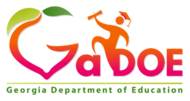
The No Child Left Behind Act of 2001 (NCLB) was a 2002 U.S. Act of Congress promoted by the presidency of George W. Bush. It reauthorized the Elementary and Secondary Education Act and included Title I provisions applying to disadvantaged students. It mandated standards-based education reform based on the premise that setting high standards and establishing measurable goals could improve individual outcomes in education. To receive federal school funding, states had to create and give assessments to all students at select grade levels.

The North Carolina superintendent of public instruction is an elected constitutional officer in the executive branch of the government of the U.S. state of North Carolina. As the head of the North Carolina Department of Public Instruction, the superintendent oversees the public school systems of the state. They also serve as the secretary of the North Carolina State Board of Education and are a member of the North Carolina Council of State. The incumbent is Mo Green, who became superintendent on January 1, 2025.

The North Carolina State Board of Education, established by Article 9 of the Constitution of North Carolina, supervises and administers the public school systems of North Carolina. The board sets policy and general procedures for public school systems across the state, including teacher pay and qualifications, course content, testing requirements, and manages state education funds.

The Elementary and Secondary Education Act (ESEA) was passed by the 89th United States Congress and signed into law by President Lyndon B. Johnson on April 11, 1965. Part of Johnson's "War on Poverty", the act has been one of the most far-reaching laws affecting education passed by the United States Congress, and was reauthorized by the No Child Left Behind Act of 2001.
The Pennsylvania Department of Education is the executive department of the state charged with publicly funded preschool, K-12 and adult educational budgeting, management and guidelines. As the state education agency, its activities are directed by the governor appointed Pennsylvania's Secretary of Education. The agency is headquartered at 333 Market Street in Harrisburg. The Pennsylvania Department of Education oversees 500 public school districts of Pennsylvania, over 170 public charter schools (2019), Career and Technology Centers/Vocational Technical schools, 29 Intermediate Units, the education of youth in State Juvenile Correctional Institutions, and publicly funded preschools. In 2019, the Pennsylvania Department of Education employs approximately 500 persons.

The Oklahoma Department of Career and Technology Education is an agency of the state of Oklahoma located in Stillwater, Oklahoma.
Adequate Yearly Progress (AYP) was a measurement defined by the United States federal No Child Left Behind Act that allowed the U.S. Department of Education to determine how every public school and school district in the country was performing academically according to results on standardized tests. As defined by National Council on Measurement in Education (NCME), AYP was "the amount of annual achievement growth to be expected by students in a particular school, district, or state in the U.S. federal accountability system, No Child Left Behind (NCLB)." AYP has been identified as one of the sources of controversy surrounding George W. Bush administration's Elementary and Secondary Education Act. Private schools were not required to make AYP.

The New York State Education Department (NYSED) is the department of the New York state government responsible for the supervision for all public schools in New York and all standardized testing, as well as the production and administration of state tests and Regents Examinations. In addition, the State Education Department oversees higher education, cultural institutions such as museums and libraries, vocational rehabilitation, and the licensing of numerous professions. It is headed by the Board of Regents of the University of the State of New York (USNY) and administered by the Commissioner of Education.
East Brunswick Public Schools is a comprehensive community public school district serving students from pre-kindergarten through twelfth grade in East Brunswick, in Middlesex County, in the U.S. state of New Jersey.
The Oklahoma State Superintendent of Public Instruction, sometimes called the Oklahoma State School Superintendent, is the chief executive officer for the Oklahoma State Department of Education and the president of the Oklahoma State Board of Education. The State Superintendent of Public Instruction is responsible for overseeing, implementing and reviewing the policies of the Oklahoma's public school system.

Savannah State University is a public historically black university in Savannah, Georgia. It is the oldest historically black public university in the state. The university is a member-school of the Thurgood Marshall College Fund.

The Oklahoma State Department of Education is the state education agency of the State of Oklahoma charged with determining the policies and directing the administration and supervision of the public school system of Oklahoma. The State Board of Education, the governing body of the Department, is composed of the Oklahoma State Superintendent of Public Instruction and six members appointed by the Governor of Oklahoma with the approval of the Oklahoma Senate. The State Superintendent, in addition to serving as chair of the Board, serves as the chief executive officer of the Department and is elected by the voters of Oklahoma every four years.

The Florida Department of Education (FLDOE) is the state education agency of Florida. It governs public education and manages funding and testing for local educational agencies. It is headquartered in the Turlington Building in Tallahassee.

The Cape May County Technical School District is a regional public school district that offers occupational and academic instruction for public high school and adult students in Cape May County, in the U.S. state of New Jersey. The district and its high school was established in 1915.

The Michigan Department of Education (MDE) is a state agency of Michigan, in the United States. The MDE oversees public school districts in the state. The department is governed by the State Board of Education. The State Board of Education was first provided for in the Constitution of 1850 and currently exists through the provisions of Article VIII, Section 3, of the Constitution of 1963. The state board is composed of eight members nominated by party conventions and elected at-large for terms of eight years, with two members being elected at each biennial state general election. The governor is authorized to fill vacancies on the state board and also serves as an ex officio member of the state board, without the right to vote. The superintendent of public instruction is appointed by the board for a term to be determined by the board, to serve as its chair, without the right to vote.

The South Carolina Department of Education is the state education agency of South Carolina. It is headquartered in Columbia at the Rutledge Building. The agency is overseen by an elected Superintendent of Education, currently Ellen Weaver.

The Idaho Department of Education is an executive agency of the Idaho state education system. The department is responsible for public elementary and secondary school matters as provided by Title 33, Idaho Code, or as determined by the Idaho State Board of Education. It is headquartered in the state capital, Boise, Idaho.
Formal education in Mississippi began in the early 19th century with private schools and academies, a public education system was founded during the Reconstruction era, by the biracial legislature led by the Republican Party. Throughout its history, Mississippi has produced notable education inequalities due to racial segregation and underfunding of black schools, as well as rural zoning and lack of commitment to funding education.

Pittsburgh Public Schools is the public school district serving the city of Pittsburgh, Pennsylvania and adjacent Mount Oliver, Pennsylvania. As of the 2021–2022 school year, the district operates 54 schools with 4,192 employees and 20,350 students, and has a budget of $668.3 million. According to the district's 2021 budget, based on the 2010 U.S. Census, the combined land area served is 55.3 square miles (143 km2), with a population of 309,359.
The Kentucky Department of Education (KY DOE) is an agency within the government of Kentucky that is responsible for regulating education in the state.












